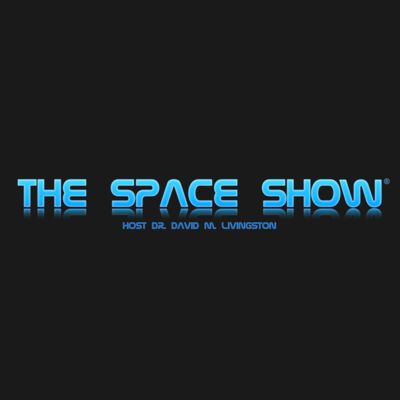The Space Show focuses on timely and important issues influencing the development of outer-space commerce, space tourism,space exploration and space development. The Space Show is committed to facilitating our becoming a space-faring nation and society with a growing and self-sustaining space-faring economy. The Space Show also focuses on other related subjects of interest to us all.
http://www.thespaceshow.com/
Dr. Erik Seedhouse, Monday, 4-1816
Guest: Dr. Erik Seedhouse. Topics: We discussed his book "Mars Via The Moon" plus timelines for our TRL for enabling a human to Mars mission. Please direct all comments and questions regarding specific Space Show programs & guest(s) to the Space Show blog which is part of archived program on our website, www.thespaceshow.com. Comments and questions should be relevant to the specific Space Show program. Written Transcripts of Space Show programs are a violation of our copyright and are not permitted without prior written consent, even if for your own use. We do not permit the commercial use of Space Show programs or any part thereof, nor do we permit editing, YouTube clips, or clips placed on other private channels & websites. Space Show programs can be quoted, but the quote must be cited or referenced using the proper citation format. Contact The Space Show for further information. In addition, please remember that your Amazon purchases can help support The Space Show/OGLF. See www.onegiantleapfoundation.org/amazon.htm. We welcomed Dr. Erik Seedhouse back to the show to discuss his new book, "Mars Via The Moon." Our 1 hour 51 minute discussion did not have a break due to a very active discussion with Erik and listener emails so we are nonstop for this nearly two hour Space Show program. Erik started the discussion by saying it might take 20-40 years to develop the technologies for our sending humans to Mars. I asked him to elaborate on the 40 year component of the timeline and that opened the door for Erik to discuss the challenges facing humans to Mars. Erik discussed the need for closed loop life support, a tested and functioning EDL system for very large payloads, O2 generation, radiation mitigation strategies, artificial gravity or other microgravity mediation techniques and solutions to vision problems. He also talked about other challenges as well. Keep in mind That at no time did Erik say there were show stopper challenges, just difficult challenges. He also talked about the crew needing to land on Mars ready to start working. He compared and contrasted that requirement with the reality of crew condition coming back from the ISS or the older space shut as often the crew needed to go through a type of rehab to start working again. He said there would be no rehab facilities or help on Mars. Erik then made the case for testing hardware and technologies on the Moon first. He suggested that since we are years if not decades away from humans to Mars, we should use the time to develop technologies, techniques, hardware and procedures for living and working in space on the Moon. As you will hear, many listeners challenged him on this because they said there were too few similarities between the Moon and Mars to render the Moon less than desirable as a Mars training ground and facility. Do you agree with the listeners challenging Erik or do you agree with Dr. Seedhouse? Let us know on the blog. Dr. Seedhouse was asked specific questions about radiation, ISRU, and Mars EDL. Don't miss how Erik handled these questions and concerns. Dr. Doug emailed about first doing a Mars flyby mission and suggested remedies for one vision problem, cataracts. Also in this discussion, Arnold asked about humans going to Venus to settle a cloud city rather than going to Mars. Don't miss what our guest had to say about Venus and cloud cities. We fielded several emails from our friend Gerald Everett in Florida dealing with Red Dragon, cataracts, having ESA do lunar missions and the US lead the way to Mars, on orbit centrifuge studies, and intracranial pressure as one of the vision issues. BJohn also sent in notes about ISRU and he kept trying to make the case that there were too many differences between the Moon and Mars for the Moon to be a good analog for humans to Mars. Read the rest of the summary at www.thespaceshow.com.
